The North Central IPM Center funds critical issue and working group research projects each year. Projects funded this year are described below, and some past projects are listed at the bottom of the page. No critical issue research projects were funded in 2024.
Working Group Projects
The Signature Programs of the North Central IPM Center form the core focus of the Center and serve as the foundation for setting annual priorities. When seeking funding, working groups are required to align their proposals with at least one of these programs. This approach ensures that our mission to promote the advancement and implementation of Integrated Pest Management (IPM) is furthered through targeted initiatives.
Projects that received funding are categorized based on our Signature Programs outlined below:
Protect diverse cropping systems, human and animal health, and environmental resources with IPM

Alfalfa Pest Management
Alfalfa is a vital perennial forage crop in the United States, with over 257 million tons of alfalfa hay being produced in the US from 2018-2022. Diseases, insect pests, and disorders threaten the quality and quantity of alfalfa and can reduce stand duration. The Alfalfa Pest Management Working Group was formed in 2021 to create educational resources to help those involved in alfalfa production and protection identify and manage crop threats. Resources included 57 alfalfa pest insect, disease, and disorder encyclopedia articles, seven alfalfa pest management videos, and nine life cycles available through the Crop Protection Network. Looking forward, this Working Group will continue to facilitate communication with a multidisciplinary team of alfalfa pest management experts. Additional alfalfa management resources will be created, such as a new publication focused on alfalfa diseases and a new alfalfa fungicide efficacy guide. Promotion of alfalfa resources will continue.
Project Director: Adam Sisson, Iowa State University

Hemp IPM
The industrial hemp market in the Corn Belt experienced significant growth leading up to 2020. However, there is a lack of knowledge regarding hemp pests, posing challenges for growers, stakeholders, and researchers. Different hemp varieties and growing environments face a range of pests, but resources for pest management recommendations in the Midwest are limited. The Hemp IPM Working Group (HIPMWG) aims to address these challenges by bringing together experts and stakeholders nationwide involved in industrial hemp production to integrate knowledge and experience for the benefit of North Central growers.
Project Director: Adam Sisson, Iowa State University

Midwest Grows Green Lawn & Land Forum
The Midwest Grows Green (MGG) Lawn & Land Working Group, an initiative of the IPM Institute of North America, aims to enhance sustainable landscaping policies and practices on a local, regional, and national level. In the coming year, the Lawn & Land Forum will focus on three objectives: improving the recognition of IPM/sustainable landscapes, organizing workshops and resources for landscape managers, and promoting sustainable landscaping adoption in the North Central region. The group has already achieved milestones such as the publication of LawnandLand.org, hosting webinars, implementing the Technical Assistance Program, and establishing the Green Shield Certified for Landscapes program.
Project director: Ryan Anderson, IPM Institute of North America, Inc; Lawn and Land Forum

North Central School IPM
The School IPM Working Group provides valuable information on pest control in schools while minimizing risks. In the upcoming year, their focus will be on distributing Pest Defense for Healthy Schools trainings and resources to K-12 school staff and students. This program offers scientifically vetted IPM educational modules tailored to specific school employee groups. The group also plans to expand their efforts by raising awareness, analyzing state policies related to school IPM, and integrating IPM into school curriculums and management practices. Notably, the Pest Defense program has already trained over 4,000 individuals, and Green Shield Certification is now available for schools.
Project director: Ryan Anderson, IPM Institute of North America, Inc
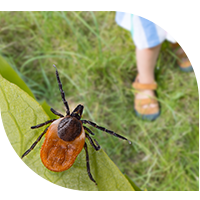
Public Tick IPM
Ticks and the diseases they transmit pose significant public health risks to humans, pets, and livestock. In the North Central region, multiple tick species carrying various tick-borne diseases have been identified, with all 12 states reporting cases of Lyme disease in 2019. The Public Tick IPM Working Group is dedicated to raising awareness about effective integrated pest management (IPM) strategies to control ticks and reduce the incidence of tick-borne diseases. Their objectives for 2023-2024 include increasing awareness among health professionals, improving knowledge of tick life cycles and management practices, and assisting underserved communities in developing effective tick management programs. The group has already achieved notable milestones such as hosting the Tick IPM Academy, establishing a listserv and monthly webinars for networking, creating policy fact sheets, posters, and pest alerts related to tick-borne diseases, and providing educational resources on tick surveillance methods.
Project director: Ryan Anderson, IPM Institute of North America, Inc
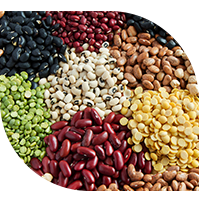
Pulse Crops
Pulse crops (dry edible pea, lentil, chickpea, and dry bean) are important and valuable crops in the North Central region, offering health benefits and enhancing cropping systems. They require minimal nitrogen fertilization and provide a nitrogen credit to subsequent crops. While pulse crops have economic advantages and break disease cycles, they also face their own disease and pest challenges. The group facilitates collaboration among researchers, extension professionals, growers, commodity groups, and industry experts to address IPM priorities in pulse crops. They organize meetings and virtual interactions, and develop educational materials tailored to grower needs, including a podcast focused on IPM for pulse crops.
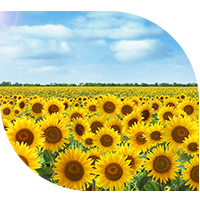
Sunflower Pathology
The Sunflower Pathology Working Group (SPWG) is a collaborative effort that brings together experts from various regions to address the challenges of sunflower diseases. With limited resources and information available on sunflower diseases, the SPWG aims to provide valuable outputs and resources to growers, advisors, and researchers worldwide. Recent achievements include the development of disease pages on the National Sunflower Association website, publication of chapters in books, and the creation of disease management resources for growers. The SPWG is committed to continuing their work by completing diagnostic series and submitting grant proposals for further disease management advancements.
Project Director: Samuel Markell, North Dakota State University

Ornamental Crop Production Working Group
The ornamental industry includes nursery, greenhouse, landscape, and Christmas tree production. Controlling weeds is essential for growing high quality, healthy ornamentals. The Ornamental Crop Production Working Group will create a team of scientists, educators, and regulatory specialists to create a weed control guidebook for ornamental crop production exclusively for the North Central region. This guidebook will help the growers efficiently develop their weed management plans and herbicide programs. It will provide information on both chemical and non-chemical options for weed control and growers will be able to access extensive lists of all registered preemergence and postemergence herbicides that are labeled and safe to use for ornamental crop production. It will also include management strategies for difficult to control weeds, such as yellow nutsedge (Cyperus esculentus), Canada thistle (Cirsium arvense), liverwort (Marchantia polymorpha), and horsetail (Equisetum arvense), along with management strategies to avoid herbicide resistance development. Growers and stakeholders will also get insight on best management practices of herbicides, how pesticides/herbicides can affect the environment, and how to minimize their leaching and runoff.
Project Director: Dr. Debalina Saha, Michigan State University
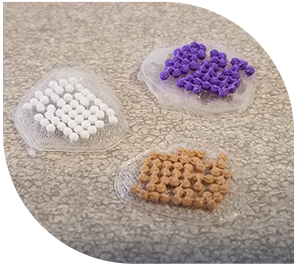
Tactile Toolbox Working Group
Scouting for insects and diseases is one of the most challenging skills to learn to be able to integrated pest management. It can also be difficult to teach accuracy when quantifying disease severity or amount of insect damage. The Tactile Toolbox Working Group will facilitate collaboration among experts from various disciplines like entomology, plant pathology, agronomy, graphic design, and engineering, as well as industry professionals, and partners from government agencies. This team will establish a repository for 3D printing models related to crop diseases, insect damage, and assessment technique and will organize a workshop to increase awareness of the availability and effectiveness of 3D printed training materials.
Project Director: Dr. Horacio Lopez-Nicora, The Ohio State University
Ensure food security by preparing for disruptive forces such as climate change, pest resistance and invasive species

Great Lakes Urban Agriculture
Urban agriculture enterprises in the North Central region have emerged as viable niche businesses, catering to new and beginning farmers, non-English speakers, and historically underserved populations. Due to limited resources and unconventional pest management practices, these operators often lack experience in specialty crop production and pest management. To address these needs, the Great Lakes Urban Agriculture IPM Working Group was established, aiming to provide research-based information tailored to small-scale operations. Their current objectives involve organizing networking meetings, conducting a survey to identify urban growers' IPM needs, and creating YouTube videos to engage younger populations on environmental considerations.
Project Director: Margaret Rivera, The Ohio State University

Public Gardens as Sentinels Against Invasive Plants
The Public Gardens as Sentinels Against Invasive Plants Working Group (PGSIP) was formed in 2018 as a collaboration between The Morton Arboretum and the Midwest Invasive Plant Network. The group aims to empower public gardens to lead in addressing invasive plant issues by tracking and sharing information on plants escaping from cultivation. The PGSIP database, launched in 2020, has been updated to improve record editing and reduce confusion. Efforts in 2021 have focused on engaging more public gardens and developing communication strategies for non-garden audiences.
Protect pollinators and other beneficial insects
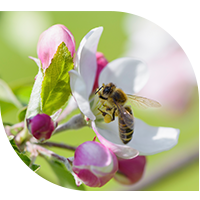
Managed Pollinator Protection Plans
The Managed Pollinator Protection Plans (MP3s) Working Group was established to address the limited progress in improving pollinator health and the challenges faced by states and tribes in implementing MP3s. The group promotes collaboration and resource-sharing among professionals working on MP3s to eliminate redundant efforts and foster a coordinated approach. A key aspect of the group's work is providing pollinator IPM education for pesticide applicators, as it aligns with the strategies of MP3 action plans. By increasing awareness and adoption of IPM principles, the project aims to reduce pesticide exposure to pollinators and improve overall pollinator health.
Project Director: Ana Heck, Michigan State University

Rights-Of-Way as Habitat
Pollinator populations are declining globally, impacting food supplies and ecosystems. The Rights-of-Way as Habitat Working Group engages over 400 organizations across industries, academia, and governments in the U.S. and Canada to promote pollinator-oriented habitat conservation on energy and transportation landscapes. The group focuses on information dissemination, cross-sector collaboration, and tool development to support habitat creation. In 2023, they will host webinars, discussions, and communications to address key issues and update participants on pollinator-friendly practices, while improving their website as a resource hub.
Project Director: Caroline Hernandez, University of Illinois-Chicago
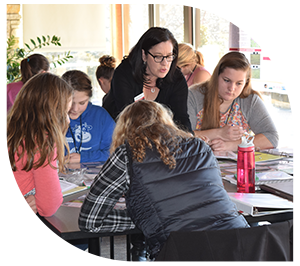
Pollinator Education and Action for Youth
The Pollinator Education and Action for Youth working group aims to educate the general public, especially youth, about the importance of pollinators and their protection. By developing cohesive educational programs, including lessons on pollinator significance, habitat enhancement, and integrated pest management, the group intends to increase knowledge and awareness. The working group recruits educators and provides training, resources, and supplies to implement the curriculum, ultimately leading to increased pollinator habitat and protection efforts in communities. Achievements include establishing pollinator education goals, aligning them with K-12 education standards, and identifying educational resources for easy use in lesson plans.
Project Director: Lynne Campbell, Iowa State University
Critical Issue Projects
Projects that received funding are listed below:
Weed Emergence Scouting Tool (WEST)
The U.S. corn and soybean production systems heavily rely on post-emergence applied herbicides, leading to the rapid spread of herbicide-resistant weeds. In response, increased use of soil residual herbicides and pre-plant tillage has become necessary. To address this challenge, a proposal has been made to develop the Weed Emergence Scouting Tool (WEST), a real-time monitoring tool that integrates weed emergence and management knowledge with high-resolution weather and climate data. This tool aims to support more effective weed management practices by enabling timely application of soil residual herbicides and implementing tillage measures based on the emergence of key weeds such as giant ragweed and waterhemp in the Midwest region.
Past Projects
Working Group Projects
The Agriculture and Wildlife Coexistence Working Group was created to help farmers with challenges associated with having wildlife near the farm, from crop damage to livestock disease. The goal was to list the problems, identify solutions and promote the solutions to growers.
- 8 wildlife-ag bulletins published in March of 2019
- Conducted a survey of specialty crop, row crop, ornamental and livestock producers to learn about challenges and needs related to wildlife damage management.
- Michigan State University Extension Ag and Wildlife Podcast created in 2021
This project is still active as the Crop Protection Network. It allows extension materials to be created once and then shared across programs in multiple states.
- Certified Crop Advisor Continuing Education Credit Exams
- Disease Loss Estimate Calculator
- Research Updates Publications: “Pesticide Impact on White Mold (Sclerotinia Stem Rot) and Soybean Yield” & “Seed Treatment and Foliar Fungicide Impact on Sudden Death Syndrome and Soybean Yield”
- Webinar: “Seedling Disease of Soybean and Using Seed Treatments to Reduce Losses”
- I See Dead Plants Podcasts
- Virtual Crop Scouting School
- Disease Severity and Defoliation Training tool
- Multiple publications covering topics from cover crops to soybean and corn diseases
This working group is welcome to all Extension Entomologists with a few meetings a year and the opportunity to connect and ask questions through the team software called Basecamp.
This project seeks to unite agricultural stakeholders, from researchers to farmers to ag businesses and organizations so that good farming practices can be implemented with benefits to farmers, citizens and society. Learn more on the Farming and Food Narrative Project website.
From 2010 to 2020, hop production interests in regions like the Great Lakes, Northeast, and North Central grew significantly, with a 284 percent increase in acreage outside of the Pacific Northwest. Market support also surged, with 50 percent of brewers willing to pay a premium for locally grown hops. Despite the enthusiastic growth, re-emerging production regions face challenges due to limited resources and expertise. The Great Lakes Hop Working Group (GLHWG) successfully facilitates collaborative research and outreach efforts, resulting in achievements such as hop production tours, online courses, virus identification surveys, diagnostic tools, and an MSU Hop Podcast.
Regional extension educators in the North Central region can improve their support for growers by establishing a strong network that spans state lines. The Great Lakes Vegetable Working Group (GLVWG) aims to facilitate this connection through winter meetings for Extension professionals, summer grower exchanges, and tours for early career individuals, fostering lasting relationships among vegetable growers across the Great Lakes region and beyond.
The Great Lakes Fruit Workers Working Group unites professionals across multiple fields, from researchers to extension specialists and consultants to improve information sharing related to pest management on fruit crops. More details are on the Great Lakes Fruit Workers website or in this summary of efforts.
The wheat stem sawfly (WSS) has become a significant pest of wheat, causing substantial yield losses and impacting dryland cropping systems in the Great Plains region. Despite the lack of widely adopted IPM tools for WSS management, the specific limitations to adoption are not well understood. The Great Plains Sawfly Survey Working Group aims to address this by identifying needs and pathways for IPM adoption, organizing a wheat IPM forum, and producing a white paper on the impact of WSS on U.S. agriculture.
The IPM4Bees Working Group promotes collaboration and knowledge sharing among researchers, extension professionals, and stakeholders in the field of honey bees, native bees, and bee-related integrated pest management (IPM). The group focuses on pollinator-friendly agricultural practices and IPM for honey bee pests. Their achievements include organizing symposiums, workshops, and virtual seminars, as well as creating extension videos on beekeeping and varroa mite checks. They also conducted an IPM for Bees Extension Exchange Seminar in 2022.
To streamline the process of identifying invasive plant species, the Invasive Species Working Group, comprising representatives from multiple Midwestern states, aimed to create a shared database of scientific references. By meeting monthly and pooling resources, the group was able to accelerate the assessment of invasive plants, preventing duplication of efforts and enabling quicker updates to state-based invasive plant lists. The project’s goals included proactively identifying invasive species and promoting efficient resource utilization among states.
The Iowa Pest Resistance Management Program is a collaborative effort including individuals and groups representing all parts of the Iowa community, including farmers and landowners, small and national businesses, scientists, researchers and state regulators. Together, these partners leverage resources, expertise and time to help inform the public about pest resistance, find new pest management strategies and encourage public support and adoption of these practices. Since the state plan was written, two separate community teams have taken the lead to bring attention to local pest threats, potential resistance issues, and effective management options that preserve available tools.
The nursery and greenhouse industry is the fastest-growing segment of U.S. agriculture, with steady growth in production facilities and cash receipts over the last two decades. In the North Central region, which has four states in the top 15 nationally, the industry contributes significantly to total national nursery and greenhouse sales. However, nurseries face various IPM and management challenges that can impact profit margins. To address these issues, the working group conducted annual meetings and developed crop profiles for nursery crops within the region.
Visit the Nursery IPM Facebook page for more information.
Locally produced specialty crops, such as vegetables, fruits, and wines, are rapidly growing sectors in U.S. agriculture. However, their continued growth is threatened by herbicide drift, particularly from dicamba and 2,4-D, which poses a high risk to specialty crop growers in the North Central region. To address this issue, a group of weed, agronomic, and horticulture crop specialists will evaluate and prioritize the challenges and develop resources for education and prevention to mitigate drift risks and support the long-term stability of these enterprises.
Learn more on the Herbicide-Drift Risk Management for Specialty Crops website.
The Pest Alert Network Working Group facilitated improved communication between stakeholders to address pest threats in crop production. They achieved this by creating a pest alert network, generating maps of insect sightings, and developing a Mesonet tool for monitoring predictions. Their efforts aimed to expand scouting and identification efforts, increase management options, and improve farm profitability.
Learn more by visiting the Pest Alert Network website.
This working group shares its “War Against Weeds” podcast, providing current information on integrated weed management to farmers and agronomists in the North Central region. The podcast will develop 30 full-length episodes and approximately 15 shorter episodes, aiming to increase knowledge and promote the adoption of effective weed management strategies. Surveys of podcast listeners and Extension clientele are being conducted to assess the effectiveness of this communication method. The podcast has already achieved over 16,000 downloads and serves as a model for incorporating new communication technologies in other outreach programs.
Past Critical Issue Projects
Critical issue projects support research that addresses critical pest concerns, aiming to improve understanding and management of pests that pose threats to crop productivity, human health, or safety, including diseases, weeds, and insects.
Tar spot disease of corn has caused significant yield losses in the Midwest since its confirmation in 2015. Its recent spread to the Great Plains states has raised concerns due to variations in corn production practices and the potential exacerbation of disease severity with overhead pivot irrigation. To address this, the project aims to provide outreach activities and training on affordable microscope tools for enhanced tar spot and disease diagnostics. The project will also document disease severity across irrigated and non-irrigated areas, comparing the impacts of diverse growing conditions and irrigation on tar spot development. Additionally, genetic and morphological diversity of the tar spot pathogen will be evaluated in the Great Plains region.
Soil health is crucial for food security, as a large percentage of the global food supply relies on soils. However, limited information is available on nematode community dynamics in the North Central region of the US, which can serve as bioindicators of soil health. To address this, the project aims to develop a baseline understanding of nematode communities through morphological characterization and DNA sequencing in undisturbed soils of different ecoregions in Missouri. This baseline data will facilitate future monitoring of nematode community shifts and comparison of undisturbed and disturbed soils to assess environmental and anthropogenic impacts on soil health in the North Central US.
The U.S. corn and soybean production systems heavily rely on post-emergence applied herbicides, leading to the rapid spread of herbicide-resistant weeds. In response, increased use of soil residual herbicides and pre-plant tillage has become necessary. To address this challenge, a proposal has been made to develop the Weed Emergence Scouting Tool (WEST), a real-time monitoring tool that integrates weed emergence and management knowledge with high-resolution weather and climate data. This tool aims to support more effective weed management practices by enabling timely application of soil residual herbicides and implementing tillage measures based on the emergence of key weeds such as giant ragweed and waterhemp in the Midwest region.
Over the past decade, social science research on pest resistance management has centered on growers. One major finding is that there is a need for collaborative, community-based management to encourage the use of diverse pest management methods, or integrated pest management.
Fundamental to any collaborative management is the involvement of a wide range of stakeholders. For pest resistance management, this includes growers as well as those who influence and advise them. To make progress, it is now necessary to understand the perspectives and practices of their influencers and advisors.
An exploratory attempt at understanding Certified Crop Advisors (CCAs) perspectives is currently underway, with the Weed Science Society of America facilitating a series of regional listening sessions with crop advisors over the winter of 2021/2022. This work will be expanded by conducting a representative survey of CCAs in the U.S. This would parallel a previous national survey of farmers completed in 2016, aiding in our understanding of how CCAs think, communicate, and contribute to on-farm pest resistance management decisions.
Spotted lanternfly (SLF), <i>Lycorma delicatula,</i> is a new invasive insect making headlines nationwide. Initially detected in Pennsylvania in 2014, SLF has swiftly moved through the MidAtlantic, with recent establishment in Ohio. SLF’s rapid expansion is owed to its broad host range of over 100 plant species, high fecundity, and inconspicuous life stages. Adult SLF can reach almost incomprehensible densities, often coating the surface of host plants. SLF is a public nuisance, impacting urban landscaping and backyard trees. Large infestations can kill plants or weaken them to opportunistic pests and/or diseases. Further, SLF adults produce copious amounts of honeydew which can cover cars and backyards, as well as provide ample medium for plant diseases. Many common ornamental trees like maple, walnut, willow and birch are favored host plants of SLF, and SLF can also feed on many agricultural commodities including apple, cherry, hop, and grape. Notably, many of these commodities are major specialty crops within the Midwest.
The Asian longhorned tick (ALT, Haemaphysalis longicornis) from East Asia is a serious pest of livestock. Since its formal discovery in the United States in 2017, this tick has spread to 16 US states, primarily because an adult female can lay more than 2,000 eggs via asexual reproduction, leading to rapidly growing populations and large infestations per host. The goal of this study was to employ Ohio as a model for the North Central region, to inform IPM programs and evaluate infestation risk to livestock through characterizing ALT ecology, including phenology, density, and preferences for wildlife host and habitat type. In addition, the team described the epidemiology of ALT-associated pathogens to assess risks to livestock health and occupational safety of producers, a workforce that has already been weakened by the current pandemic. An established high risk site within Ohio was monitored for six months.

